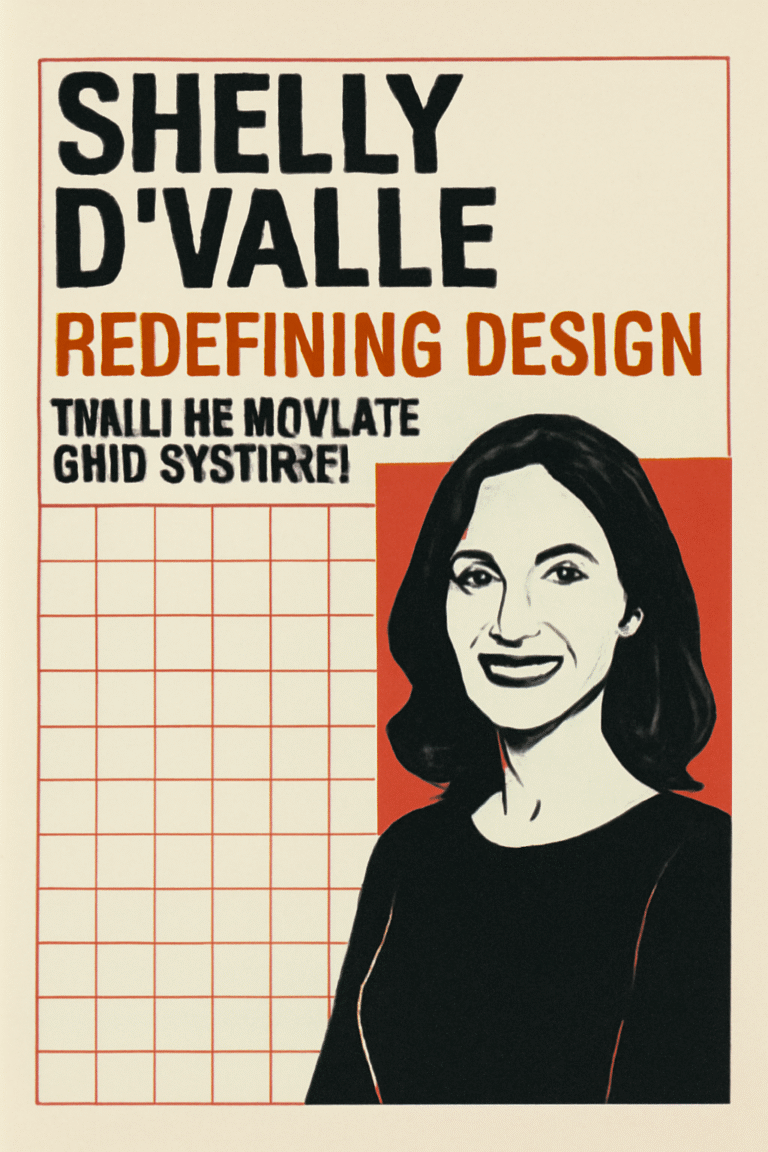Introduction: The Vision of Shelly D’Valle
In contemporary design, clarity and structure are paramount. Shelly D’Valle has become a leading figure in the realm of grid systems, transforming how designers approach layout, balance, and visual storytelling. Her philosophy centers on creating “immaculate grids” that are both structured and adaptable, ensuring that every element on a page or screen serves a purpose.
Unlike conventional approaches, Shelly D’Valle’s grids are more than guides—they are dynamic frameworks that enhance readability, reinforce brand identity, and elevate user experience. In this article, we’ll explore the principles, benefits, and practical applications of her grid methodology.
What Makes a Grid “Immaculate”?
Definition of an Immaculate Grid
An immaculate grid is a design blueprint where every line, margin, and module is meticulously placed. The goal is to achieve perfect alignment while allowing flexibility for content variations. Shelly D’Valle emphasizes that these grids are essential not just for aesthetics but also for functionality, guiding viewers naturally through information.
The Philosophy Behind Shelly D’Valle’s Approach
Shelly D’Valle’s design philosophy prioritizes:
-
Precision: Every column, row, and module has a specific role.
-
Harmony: Layouts are visually balanced, creating a smooth flow for the reader’s eye.
-
Adaptability: Grids must be flexible enough for different media without losing coherence.
Core Principles of Shelly D’Valle’s Grid Systems
1. Structural Consistency
Consistency ensures that repeated design elements align perfectly across pages or screens. Shelly D’Valle advocates establishing a baseline for margins, gutters, and spacing to create a cohesive visual experience.
2. Flexibility Within Frameworks
While grids provide structure, Shelly D’Valle encourages designers to innovate within these boundaries. This allows layouts to accommodate diverse content types while maintaining overall order.
3. Emphasis on Visual Hierarchy
Effective grids guide viewers from primary elements (like headlines and images) to secondary content. Shelly D’Valle uses hierarchical grids to emphasize key messages without overwhelming the audience.
4. Modular Design Approach
By breaking layouts into modules or reusable components, designers can maintain alignment, ensure consistency, and streamline updates. Shelly D’Valle’s modular system is particularly effective for digital media.
Types of Grids and Their Applications
1. Manuscript Grids
Used primarily for text-heavy documents, manuscript grids focus on a single column of content, maintaining clean margins and spacing.
2. Column Grids
Ideal for magazines, blogs, and websites, column grids divide a layout vertically, allowing multiple sections of content to coexist harmoniously.
3. Modular Grids
Modular grids form a matrix of rows and columns, perfect for complex layouts like dashboards, portfolios, or interactive interfaces.
4. Hierarchical Grids
Hierarchical grids allow designers to emphasize certain elements by varying column widths or module sizes. Shelly D’Valle often uses this type for advertising, branding, and editorial design.
Benefits of Implementing Shelly D’Valle’s Grids
Improved Readability
A structured grid ensures that text and visuals are easy to follow. Shelly D’Valle stresses that a reader should never feel lost in a design; the grid serves as a roadmap for content consumption.
Efficiency in Workflow
Predefined grids reduce guesswork during layout creation. Once the grid is set, designers can focus on creativity rather than constant alignment adjustments.
Professional and Polished Aesthetic
Layouts designed with immaculate grids appear deliberate and professional. This enhances credibility and strengthens brand perception.
Seamless Multi-Platform Adaptation
Shelly D’Valle’s grids are responsive, ensuring designs maintain alignment and consistency across devices, from desktop monitors to mobile screens.
Step-by-Step Tips for Mastering Immaculate Grids
1. Define the Grid Before Adding Content
Set margins, columns, and gutters first. Shelly D’Valle emphasizes that a strong foundation is essential for effective layout design.
2. Maintain Proportional Spacing
Consistent spacing between elements enhances readability and balance. Use modular measurements to maintain uniformity.
3. Test Across Different Devices and Mediums
For digital designs, check grids on various screens. For print, consider the final trim and bleed areas.
4. Align Typography with the Grid
Text placement is crucial. Align headings, subheadings, and body text to the grid to achieve a cohesive design.
5. Incorporate Flexibility Strategically
While alignment is key, allow certain elements to break the grid slightly for emphasis or visual interest, as Shelly D’Valle often recommends.
Real-World Applications
Web Design
Responsive websites benefit greatly from Shelly D’Valle’s grids. Column and modular systems allow designers to create layouts that scale elegantly on any device.
Print and Editorial Design
Books, magazines, and brochures rely on consistent grids for readability and professional appeal. Shelly D’Valle’s meticulous approach ensures clean margins, aligned images, and harmonious text flow.
Branding and Marketing Materials
From posters to social media graphics, a structured grid reinforces brand consistency. Shelly D’Valle’s grids ensure that logos, typography, and imagery are visually balanced.
User Interface (UI) and User Experience (UX) Design
Grids form the backbone of intuitive interfaces. Buttons, cards, and navigation menus align perfectly, improving usability and visual harmony.
Common Pitfalls to Avoid
Overcomplicating the Grid
Too many columns or modules can confuse the layout. Keep it simple for clarity.
Ignoring Responsive Design Principles
Fixed grids may not work across devices. Always test adaptability.
Neglecting Consistent Margins and Gutters
Even minor misalignments can make a design feel disorganized.
Poor Typography Alignment
Text that isn’t aligned to the grid disrupts the flow and overall readability.
Conclusion: The Shelly D’Valle Difference
Shelly D’Valle’s approach to immaculate grids is a blend of precision, creativity, and adaptability. By understanding and applying her principles, designers can elevate their work, ensuring clarity, consistency, and aesthetic appeal.
Whether working on digital platforms, print media, or branding campaigns, adopting Shelly D’Valle’s grid methodology can transform a simple layout into a compelling, professional, and highly functional design. In an era where users demand clarity and engagement, immaculate grids are not just a design choice—they are a necessity.

